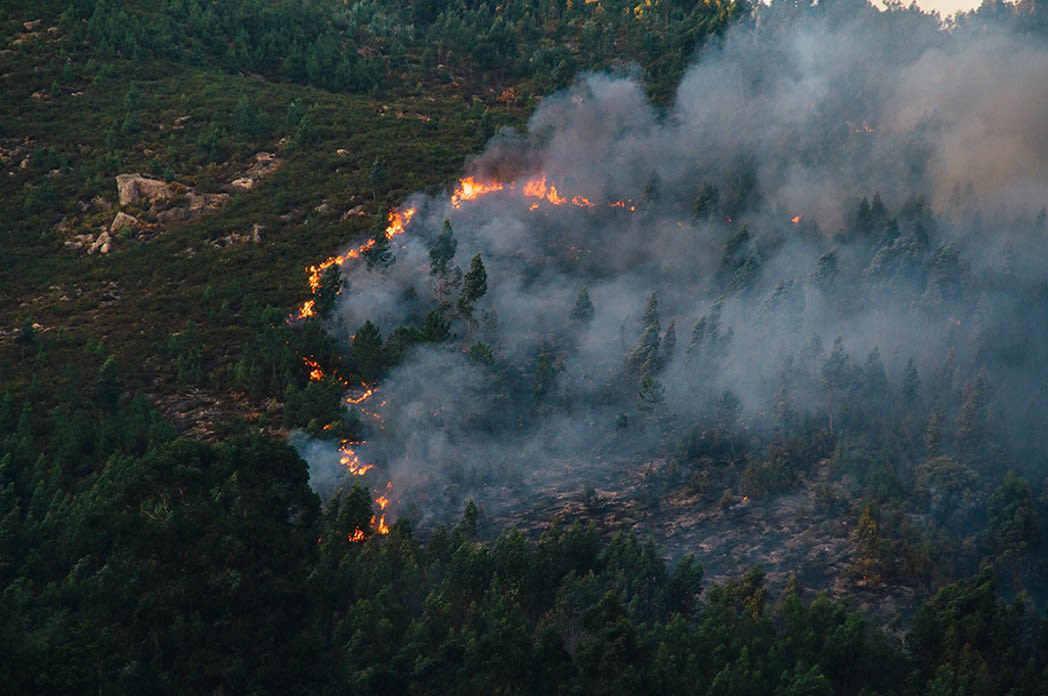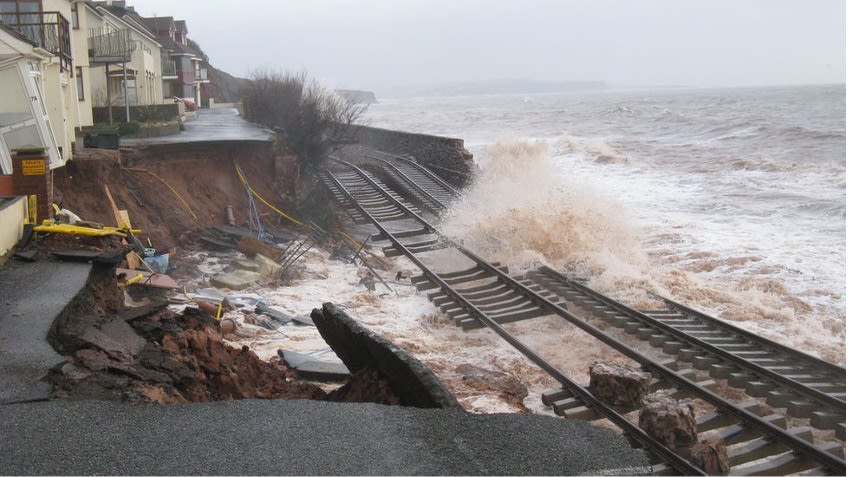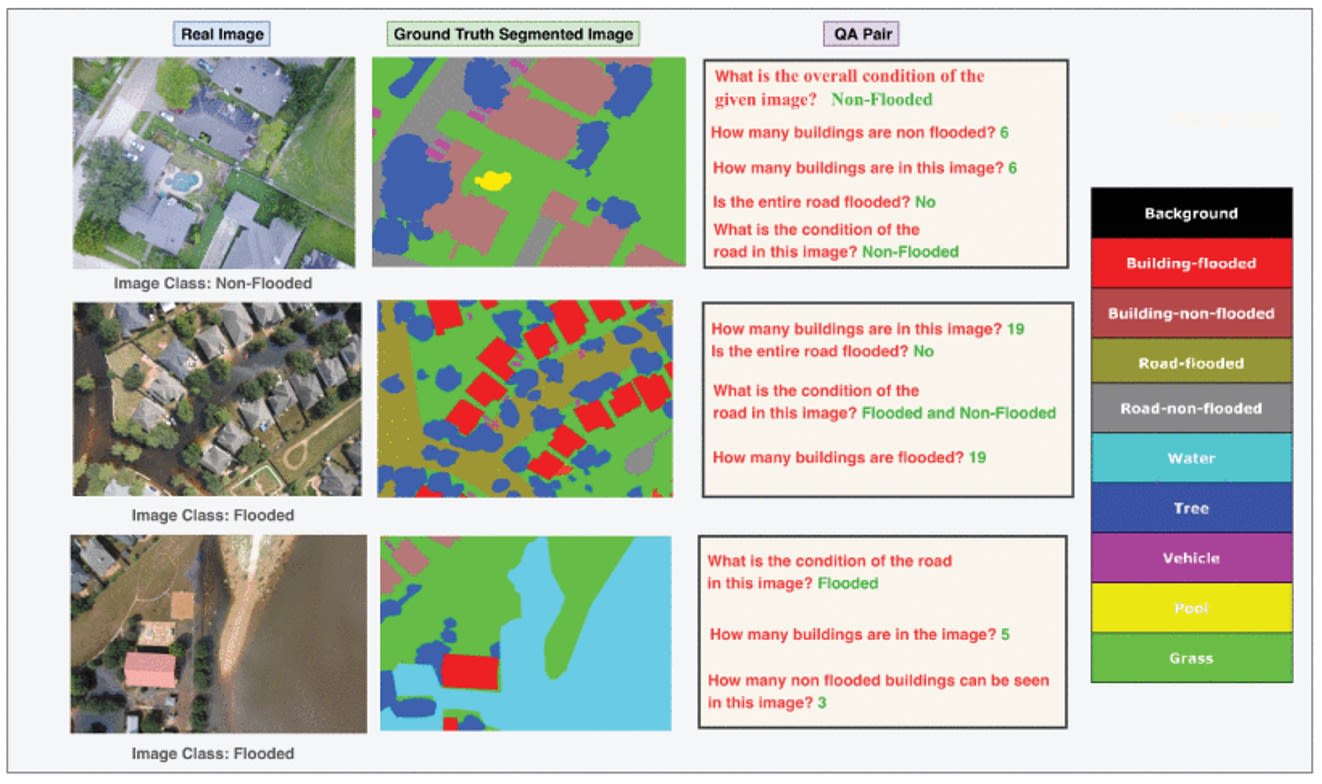Climate resilience for UK railways
UCL researchers are exploring new ways to help prepare the UK rail network for climate disruption
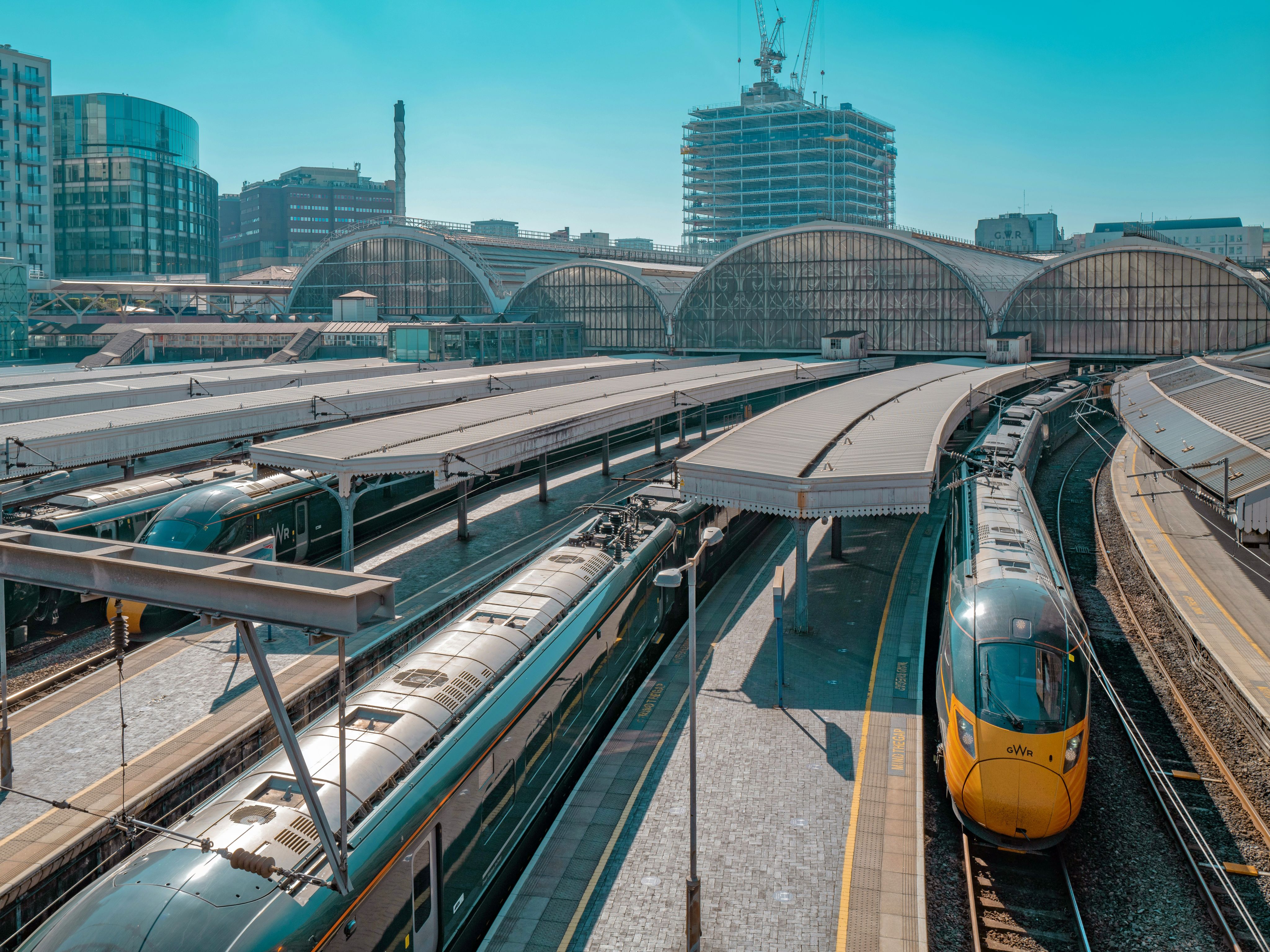
As extreme weather events become more common due to the climate crisis, we need to adapt our transport infrastructure.
The cost of inaction could easily run into the $billions. Research has shown that implementing resilience measures in transport planning could reduce damage worldwide by up to 60%.
The changing weather presents many different risks, with increasingly frequent and intense storms, rising sea levels, flooding, rain, and extreme heat events creating logistical havoc.
Each transport network will need to develop its own approach – and the rail system here in the UK presents its own unique set of challenges and vulnerabilities.
“UK railway response is critical”, says Dr Yuerong Zhang, Assistant Professor in Geospatial Machine Learning at the UCL Energy Institute.
“As well as the strategic importance of the rail networks here, there are limited alternatives for rerouting.
“The topology of the rail system in the UK is very linear, which can cause a lot of issues. If a specific segment gets in trouble, it creates great problems across the whole system, which we call cascading failures.”
Yuerong has been modelling the resilience of transport and urban systems to extreme events since 2016, and advises the UK Government’s Department for Transport.
Together with Professor Stephen Marshall, in 2022 Yuerong contributed a chapter to the Palgrave Encyclopedia of Urban and Regional Futures. Entitled ‘Transport Resilience in Urban Regions’, it created new understanding of how the way we define resilience can result in different responses and climate adaptation strategies.
“UK railway response is critical. As well as the strategic importance of the rail networks here, there are limited alternatives for rerouting.”
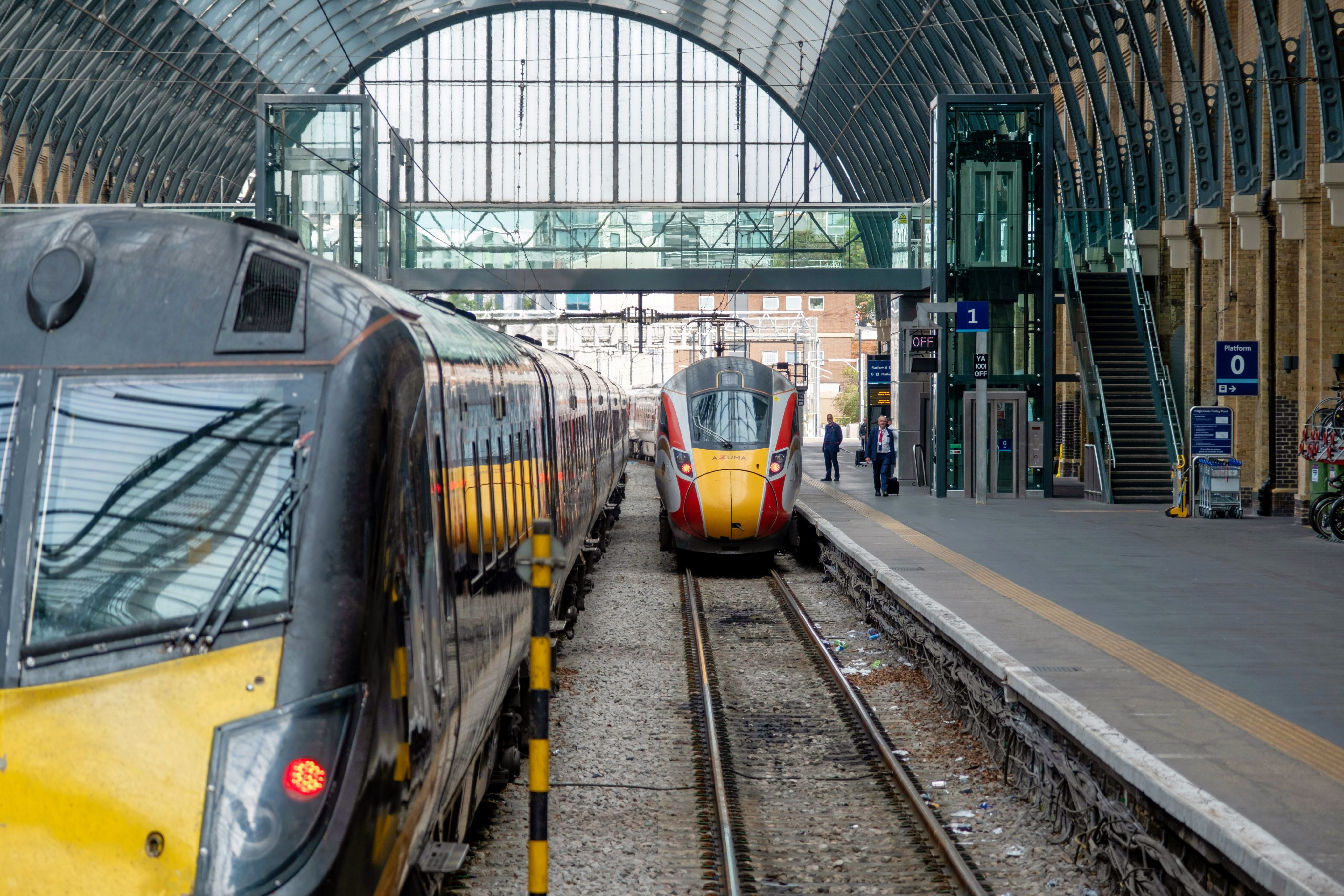
Redefining resilience
Traditionally, the concepts of resilience used to design systems have fallen into two categories.
The first, engineering resilience, defines resilience based on how quickly the system can return to normal, or ‘equilibrium’ conditions.
The second understanding of resilience, ecological resilience, focuses more on the threshold of disruption that a system can stand – how much change the system can undergo and still retain the same function and structure.
For many years, systems have been designed to provide resilience using a mix of both concepts.
However in recent times, a third way of understanding – socio-ecological resilience – has come increasingly to the fore.
Socio-ecological resilience asks us to pay attention to the opportunities that disruption opens up – and questions whether disruption should always be considered as a negative event.
Fire initiates forest regeneration. Image credit: André Bessa via Flickr
Fire initiates forest regeneration. Image credit: André Bessa via Flickr
Coastal railway tracks destroyed by 2014 storms in Dawlish, Devon. Source: Dawlish Beach Cams
Coastal railway tracks destroyed by 2014 storms in Dawlish, Devon. Source: Dawlish Beach Cams
Resilience over time
Yuerong explains: “The disruptions can be seen as renewal of the system, or the emergence of new trajectories.
“We see these patterns in natural systems. A fire can be viewed as a disaster – but for forests, periodic fires can be beneficial for growth.
“Some pine and eucalyptus trees are even fire-dependent, only really letting their seeds out after a fire event when the soil is rich and the light is less obstructed. Then they can spread their seed out, and it helps the whole forest system work better.”
But how does this apply to rail systems? Yuerong cites the destruction of a length of coastal rail track in Dawlish, Devon – and the subsequent construction of a sea wall – as a relevant example of the opportunities inherent in system disruption.
“When we look at Dawlish from a socio-ecological perspective, the destruction gave us an opportunity to re-examine and investigate the resilience of railways in coastal areas. Now they’ve built a robust sea wall, which should help them stay there for more than 100 years.”
Key to the use of socio-ecological resilience models is consideration across multiple timescales, asking ‘resilience for when?’
“We need to be aware that resilience performance is always changing. These are dynamic systems. Even if we keep rail services the same, or demand for services the same, the changing climate will change the whole system.
“It’s also complicated by the fact that we’re facing different challenges in different seasons. In summertime, we’re facing challenges from the heat, but in winter we need to pay more attention to the flooding issues – and these disruptions take place in very different locations according to the season.”
“The disruptions can be seen as renewal of the system, or the emergence of new trajectories.”

Increasing resilience through technology
Yuerong and her colleagues at the UCL Energy Institute are harnessing AI and machine learning to find ways to increase the resilience of our rail network in the UK.
“For now, AI and machine learning are primarily applied in two areas for transport resilience.
“Firstly, we can use image segmentation. Using drones, we can take thousands of images (including before, during and after weather events) and use algorithms to identify buildings, roads, green areas and other key components in our built environment. This lets us classify and measure the impacts and interactions of weather damage on specific areas.
AI-based flood damage detection using Floodnet, a high resolution aerial imagery dataset for post flood scene understanding. Source: Rahnemoonfar et al., 2021
AI-based flood damage detection using Floodnet, a high resolution aerial imagery dataset for post flood scene understanding. Source: Rahnemoonfar et al., 2021
“Secondly, we use natural language processing such as sentiment analysis in combination with social media data. Understanding in real time how people are responding and sharing information about travel disruption helps us ultimately accelerate responses to disruption.”
Yuerong is keen to help more people make the connection between climate change and the systems that support and define our modern lives.
“Most of us have experience of the disruptions of the railway system, and how that can impact on our daily lives.
“However, I think maybe not so many people are aware of how climate change might influence our railways. When we talk about climate change, people think about far away effects of CO2 emissions – but we never think to link the transport infrastructure with climate change. That’s the kind of thing I really want to make other people aware of.”
“When we talk about climate change, people think about far away effects of CO2 emissions – but we never think to link the transport infrastructure with climate change.”

About the author
Dr Yuerong Zhang
Lecturer in Geospatial Machine Learning, UCL Energy Institute
Before joining the UCL Energy Institute, Yuerong was a Leverhulme Early Career Researcher at The Bartlett School of Planning and a Transport Modelling and Policy Researcher at UCL's MaaSLab. She completed her PhD at The Bartlett School of Planning and The Bartlett Centre for Advanced Spatial Analysis.
Learn more about the global energy transition
The UCL Energy Institute offers world-leading undergraduate, Master's and PhD degrees that prepare our students for careers in energy demand, and energy economics and policy.
Story produced by All Things Words
© UCL The Bartlett 2024

